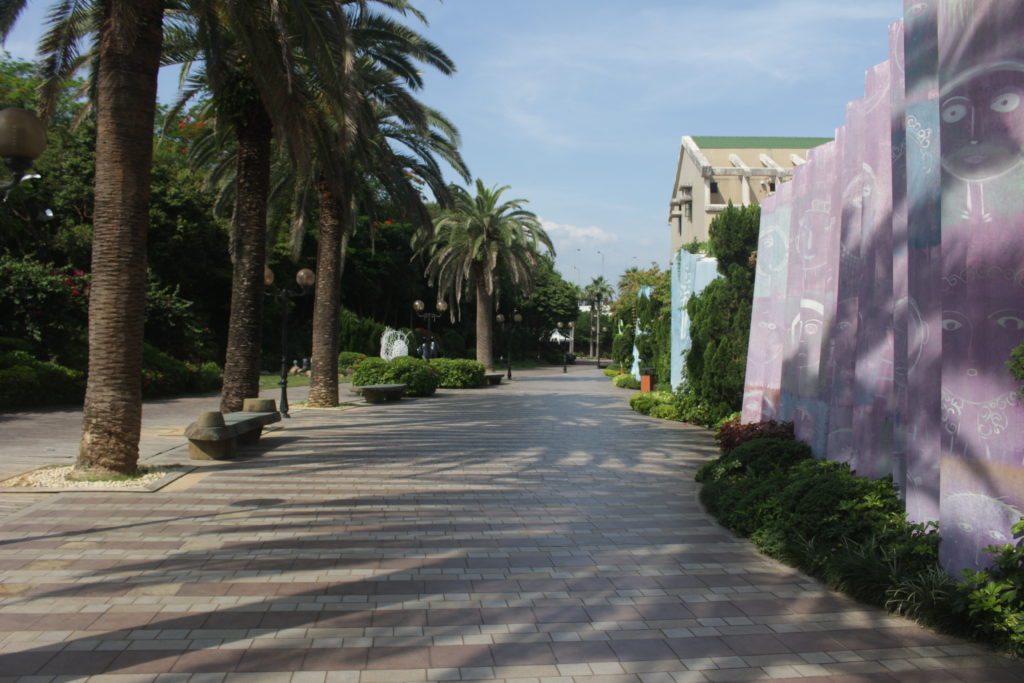It was a hot, sunny afternoon last week as I watched God wipe out most of humanity.
He does this in roughly five-minute intervals, between the hours of 10am and 6pm, seven days a week in a small amphitheater on Hong Kong’s tiny Ma Wan island. He does not rest.
My only companions in the compact cinema were four strangers. We were watching a movie about the Biblical flood.
Noah and his family were played by Asian actors, the animals were rendered in CGI circa 2008. God spoke in Chinese.
As the cinematic deluge intensified, plumes of steam poured from vents, bursts of light flashed across the room and overhead fans pummeled us in the face with gusts of air.
This is probably as good a point as any in the story to mention that our theater was housed in a full-scale replica of Noah’s Ark.
“There’s something quite surreal about hearing God’s voice in Mandarin,” noted a man in the audience, after God told Asian Noah and his family — and I’m paraphrasing here — that the coast was clear.
The audience member later gave his name as Eric and introduced his girlfriend as “Apple.”
“I’m not sure if this was worth HK$163,” said Apple.
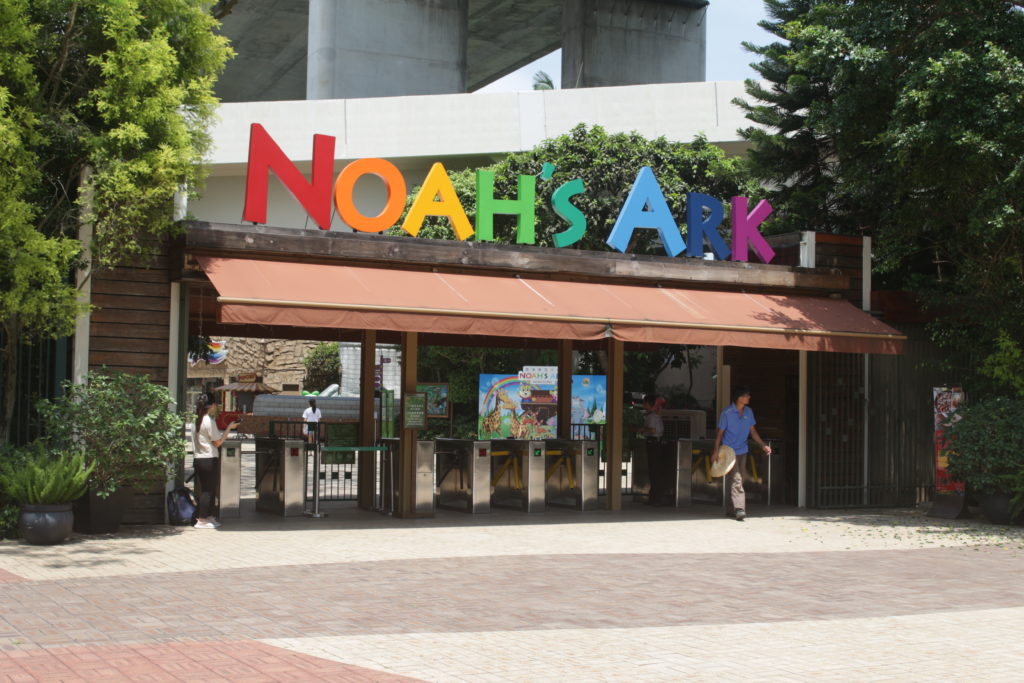
Surreal Indeed
Welcome to Noah’s Ark Hong Kong, the only evangelical Christian theme park/conference center/wedding venue/banquet hall/creationist museum/team building getaway/“kids’ educational activity center” in the city.
Opened in 2009, it once touted the world’s only Noah’s Ark replica built to the specifications laid out in the Book of Genesis: 300 cubits long, 50 cubits wide, and 30 cubits high (a cubit, as any non-heathen knows, its based on the distance from the elbow to the fingertips).
It became one of two, however, when in 2016, a “young Earth” creationist organization opened its Ark Encounter theme park in Kentucky.
But while its American counterpart is located in a deeply evangelical Christian US state, Hong Kong’s biblical barge is a bit more of a cultural oddity, demographically speaking.
With just 12 percent (884,000) of residents identifying as Christian, according to the latest census, the city’s not the first place one would expect to find such a holy hulk.
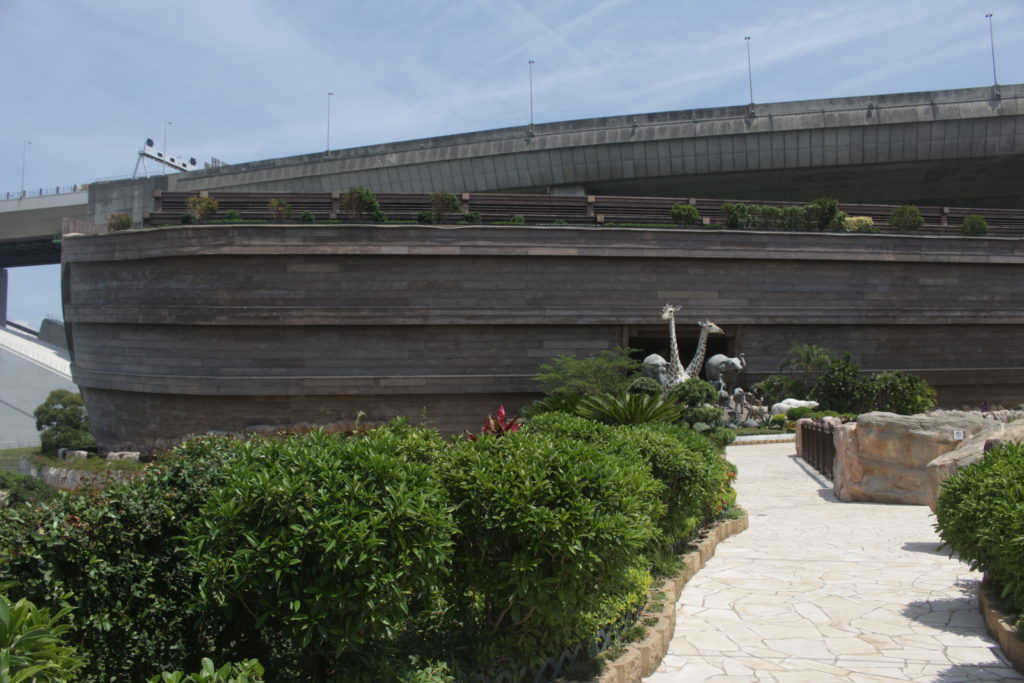
So, on a recent Friday afternoon, I set out to see this atypical tourist attraction, which at first glance, is noticeably dwarfed by the adjacent Tsing Ma suspension bridge.
As planes flew overhead en route to nearby Hong Kong airport, I meandered through the entrance and into Ark Garden.
I slipped past the Tree of Life (yes, that one) and navigated plentiful pairs of plastic animals (at least 70 by my count) scattered about to greet theoretical visitors.
Alas, while 460,000 people ostensibly visited the park last year, there was no one within earshot to whom I could point out the anatomical accuracy of the giraffe duo in front of me.
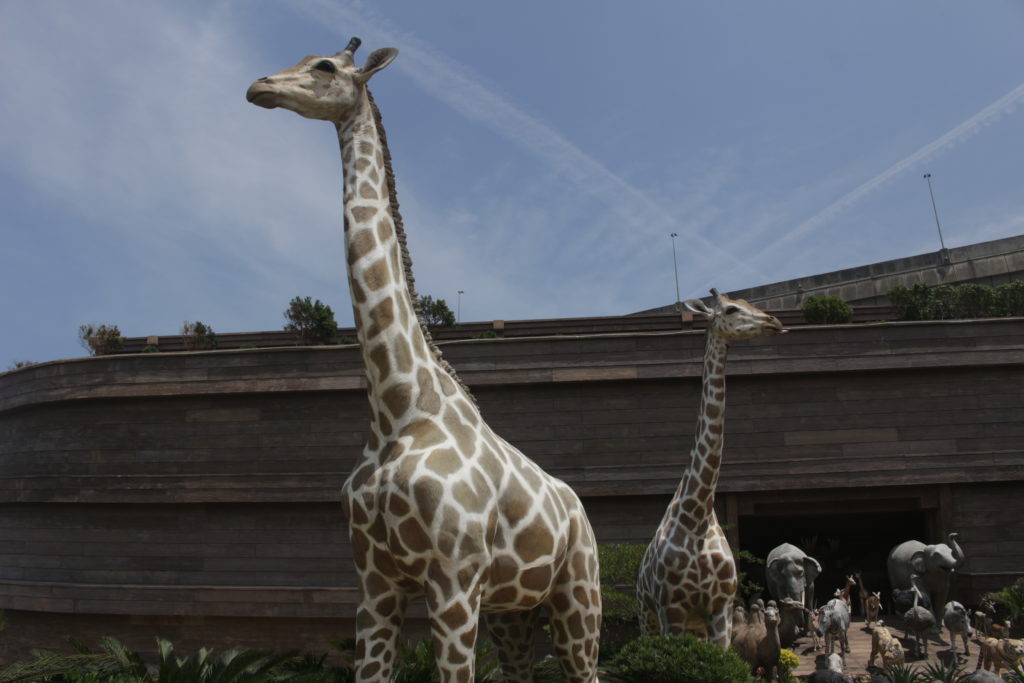
Real animals, real detail
Inside the Ark, past room with more animals — some plastic, some alive, including two glum-looking toucans, a pair of frogs, some lizards and lots of insects — a video auto-plays answers to a question, long debated in theology.
How, exactly, did the Ark’s ventilation system work? Spoiler alert: really well.
Another video installation discusses the Ark’s design, noting how, like all great ships in history, it used the “Golden Ratio.” Reference is made to the Titanic which, obviously, the Ark outperformed.
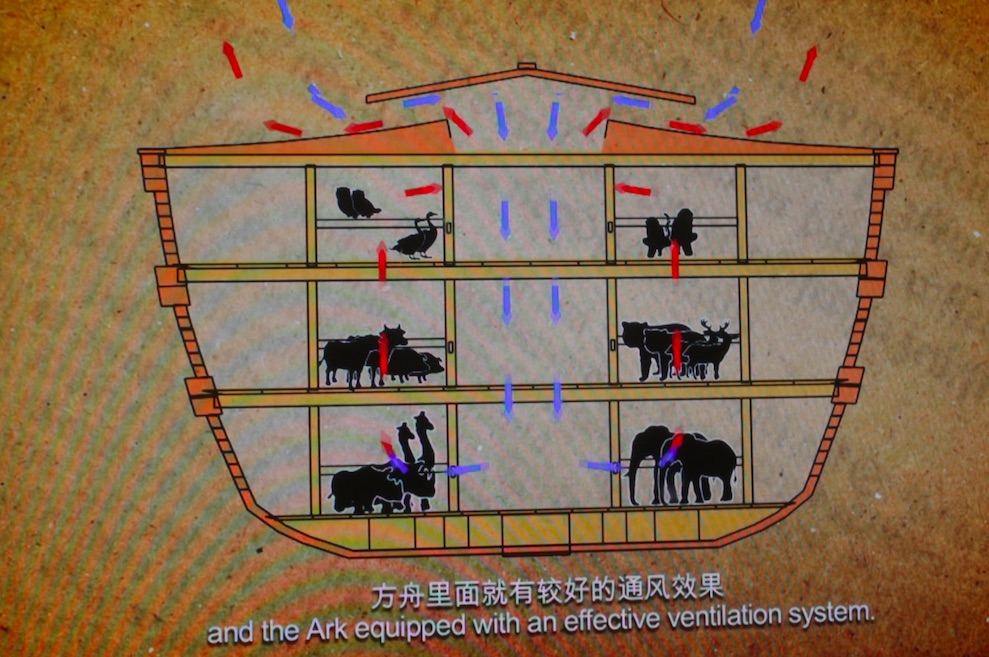
We then proceed into a curious room filled with more plastic animals depicting some of the great stories of the scriptures and — weirdly — an assortment of non-Biblical fables.
Like that of the Three Little Pigs, the moral of which — well-designed structures can withstand destructive forces — at least overlaps well thematically with Noah’s Ark.
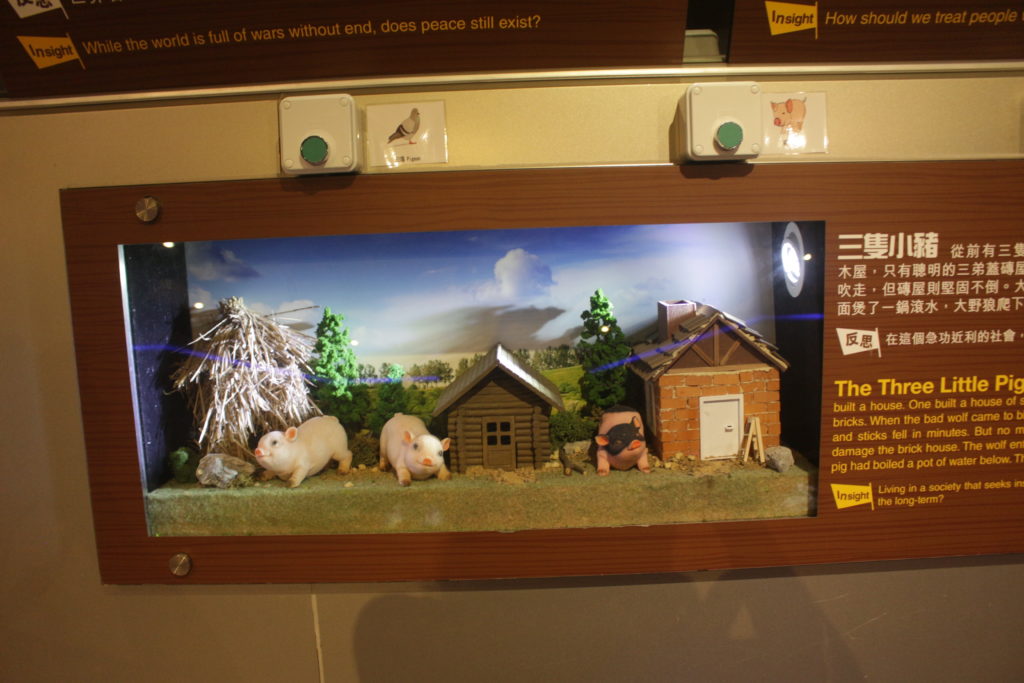
After this, it was into the amphitheater for the aforementioned movie retelling of Asian Noah’s weathering of the storm. Why exactly God wanted to destroy humanity and start afresh, is a bit vague but it involves sin. Lots of sin.
On the screen in front of us, we see humanity at its best. Babies are stabbed, women dance seductively, and a few scenes hint at the illicit, damnation-worthy joys of group sex.
The earth cleansed, I parted ways from Eric and Apple, and entered another amphitheater.
Here, the story had an updated and environmentally-woke message, delving into how humans were destroying the earth through warfare and using up its resources.
It proposed that the story of Noah’s Ark could teach everyone a little something about looking after the environment and each other, and how, even though times may seem tough, there will always be a rainbow at the end, or something. After watching (this time alone), I was filled with many questions, well one question.
Why is there a Noah’s Ark replica in Hong Kong?
In the words of the park manager Matthew Pine, the idea for a Noah’s Ark theme park in Hong Kong came from heart of an 8-year-old child.
In an interview with the Christian Broadcasting Network (the park’s management and owners declined to talk to Coconuts HK), Pine recounted a heart-warming story in which a small unidentified girl drew a picture of the Ark and gave it to her father, who gave it to the developers, who then spent millions of dollars to build it.
And, as reasonable and complete as that version sounded, thankfully there was an omnipresent source of wisdom to turn to for a few extra tidbits: The Internet.
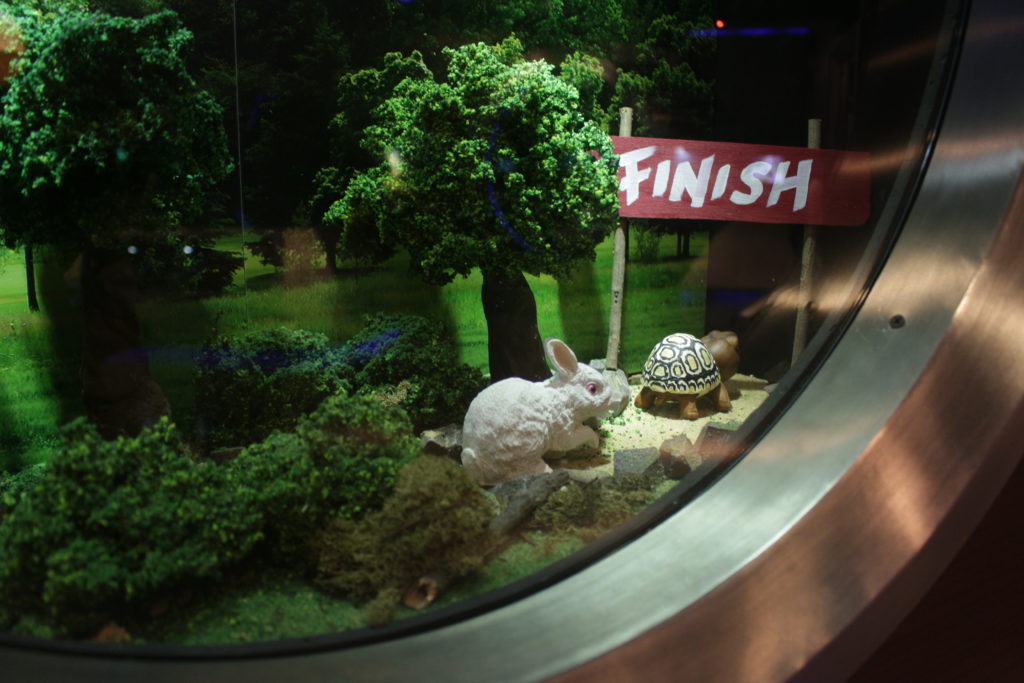
Noah’s Ark, it turns out, is part of Ma Wan Park, which is managed by a wholly-owned subsidiary of Sun Hung Kai Properties (SHKP) – one of Hong Kong’s biggest property developers — the municipal government, and several Christian organizations.
SHKP’s former chairman, Thomas Kwok – who was jailed in 2014 in a bribery scandal unrelated to the park – is known to be an evangelical Christian.
Key to this origin story, however, is the Tsing Ma bridge — one of the world’s largest suspension bridges — which was built in 1997 to connect the city with the then-newly built airport on Lantau Island.
In order for the bridge to be built, Ma Wan island — then home to just a small fishing community — needed to be developed. So, SHKP built some new apartments and, according to official documents, began to envision an “international style” theme park, with “a large number of rides.”
The plans were scaled back when, in 1998, theme park giant the Walt Disney Company turned up, partnered with the government, and chose nearby Penny’s Bay to build Disneyland.
But (much like Job in the book of … Job) SHKP rolled with the punches, and chose a new direction for their theme park, emphasizing the environment, conservation, and an ancient watery genocide.
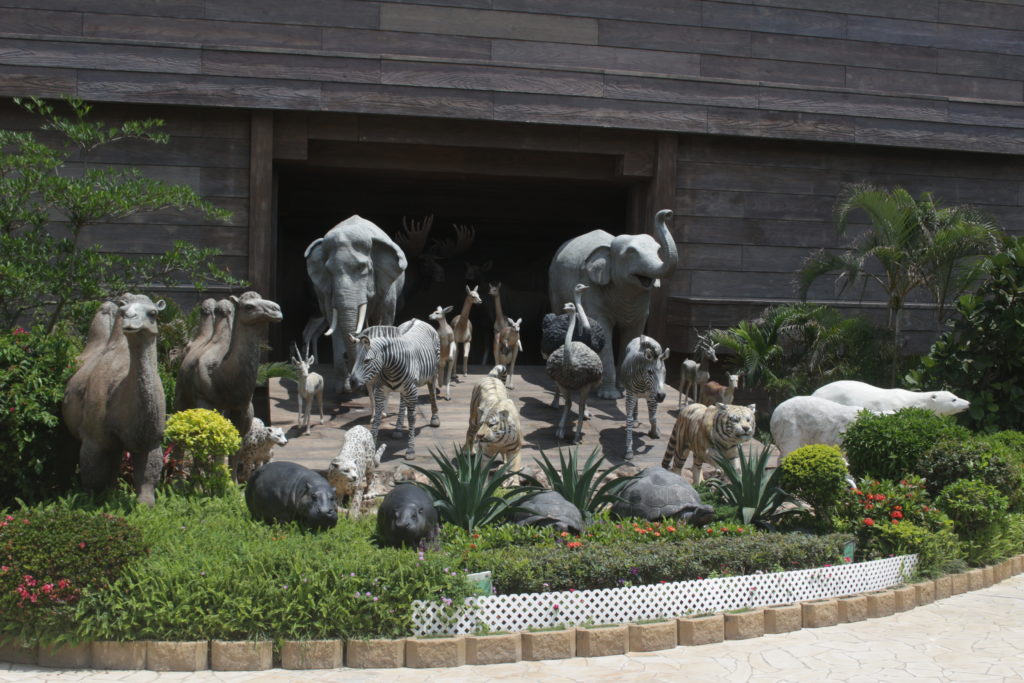
Metaphors
While there’s certainly been several attempts to prove, with references to “science,” the existence of a literal Noah’s Ark, the theme of our Hong Kong version appears to be largely about overcoming metaphorical floods.
A reminder that we all need a “vessel” to carry us through the tough times so that we can start again.
Had the group of people I saw scrambling over the park’s outdoor obstacle course as I emerged from the Ark taken away the same lessons? Hard to say.
With a bit of time to spare, I checked out a few more mini exhibitions spanning science (touting the marvels of Japanese-designed robots), music (a room with a piano), art (featuring the work of Andy Warhol), and literature (essentially a random book collection).
After getting lost in a few corridors and emerging from an elevator into a kitchen that I probably wasn’t supposed to be in, I decided it was probably time to call it a day.
A panpipe version of Simon and Garfunkel’s Sound of Silence blared from the loudspeakers.
I made my way back to the bus stop.
